Wetlands of International Importance
Ramsar Sites of the U.S.
Ramsar Sites of the U.S.
The Convention on Wetlands is the oldest of the modern global intergovernmental environmental agreements. The treaty was negotiated through the 1960s by countries and non - governmental organizations concerned about the increasing loss and degradation of wetland habitat for migratory waterbirds. It was adopted in the Iranian city of Ramsar in 1971 and came into force in 1975.
The Mission of the Convention is "the conservation and wise use of all wetlands through local and national actions and international cooperation, as a contribution towards achieving sustainable development throughout the world."
The Ramsar Convention encourages the designation of sites containing representative, rare or unique wetlands, or wetlands that are important for conserving biological diversity. Once designated, these sites are added to the Convention's List of Wetlands of International Importance and become known as Ramsar sites.
Over the last 50 years, Ramsar has designated over 2,400 sites across the globe. These sites can be explored using their Site Information Service.
There are 41 Ramsar sites across in the United States totaling over 4.6 million acres. Twenty- three of these sites fall completely or partially within U.S. Fish and Wildlife Refuges . These sites each exhibit unique habitats, providing essential ecological functions and homes for countless species.
Take a virtual tour and learn what makes these sites of global importance.
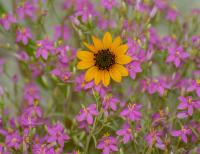
Despite being located in the hottest and driest corner of the United States, Ash Meadows is home to second greatest concentrations of endemic species in North America. In just under 24,000 acres live 26 species found nowhere else on Earth. That's because approximately 10,000 years ago, as the climate warmed, aquatic species survived by seeking refuge in receding and fragmenting wetlands. Isolated for millennia, the survivors evolved into new species in separated "islands of water" scattered across a sea of desert. Nearly all of Ash Meadows' endemic species live in or around its 50 springs and seeps, including the Devil's hole pupfish.
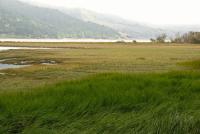
Bolinas Lagoon is a 1,100-acre tidal estuary whose pristine marshes and water-snaked mud flats are home to a fascinating diversity of waterfowl, marine fishes, and mammals. The site is located on the Pacific Flyway, which makes the Lagoon an ideal staging ground and stopover site for migratory birds, and the temperate climate provides wintering habitat for a wide array of ducks, geese, and shorebirds. The area is also popular for viewing the harbor seals which rest on the Lagoon’s sandbars. Bolinas Lagoon provides an important coastal environment for fish, birds, and mammals that is unparalleled along the northern California coast between San Francisco and Humboldt Bays. The area is also popular for viewing the harbor seals which rest on the Lagoon’s sandbars.
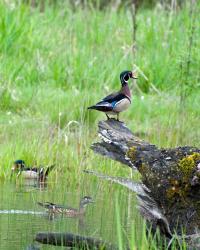
This site, representative of the Lower Mississippi Alluvial Valley Ecosystem, is part of the remaining 20% of wetlands in this area which are accordingly vital for the survival of the numerous species that depend on them. It is the most important breeding area for wood ducks in Arkansas, one of the most important wintering areas for mallard ducks in North America, and is important for several threatened and endangered species such as the ivory-billed woodpecker, and fat pocketbook mussel. Thanks to conservation efforts, the quality of the habitat in the Cache River NWR is increasing and recently expanded its acquisition boundary by over 101,000 acres.
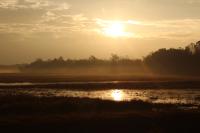
This site harbors 91% of Illinois’ high quality swamp habitat, and is located at the juncture of four ecological provinces. It contains rare examples of forested swamps dominated by bald cypress, which can reach over 1,000 years in age, as well as 50-100 feet tall water tupelo. The area is highly biodiverse and supports 103 regionally endangered or threatened species as well as numerous species of waterfowl that feed, rest and nest at the site. Over 20% of the population of canvasback ducks pass over the site during their autumn and spring migrations on the Mississippi flyway. It also supports over 1% of one of the largest populations of the Illinois chorus frog and 84 endemic species of fish that make up 44% of the fish documented in the State.
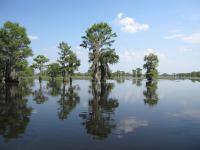
Caddo Lake is a naturally-formed lake between 28,000-32,000 acres depending on water levels. A number of wildlife and plants here are listed as rare or threatened under national and international laws, including the peregrine falcon, alligator snapping turtle, and the Rafinesque's big-eared bat. The wetlands of Caddo Lake are very important to migratory bird species within the Central Flyway. The Lake also supports diverse fish fauna, with as many as 86 species. There are at least 18 species of game fish present in Caddo waters, accounting for the lake’s important sports fishery activity. Approximately 216 bird, 47 mammal, and 90 reptile and amphibian species have been documented in this area, many of which depend on the specialized habitat provided by the wetlands of Caddo Lake.
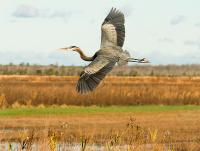
Catahoula Lake is the largest natural lake in Louisiana at over 46 square miles was formed when seismic activity caused the land to sink, which was then filled by the Little River and other smaller waterways. The water levels are artificially controlled to advance the wildlife ecosystem, as few plants are ecologically adapted to the extreme variations in water level between the wet and dry seasons. Catahoula lake is the most important inland wetland for waterbirds in Louisiana, with peak counts exceeding 400,000 birds.
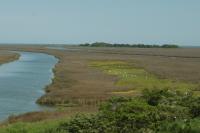
The largest estuary in the United States, this complex is composed of multiple, physically separate protected areas. Ten major rivers enter the system, creating a mixture of freshwater and saltwater from the Atlantic Ocean. The bay supports over 3,600 species of plant and animal life, including more than 350 fish species and 2,700 plant types. The complex is a major stopover site along the Atlantic Flyway and each year around 1 million waterfowl winter in the region. Four species of sea turtles also come into the lower reaches of the bay: the loggerhead, Kemp’s ridley, leatherback, and green sea turtle.
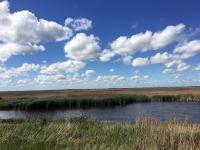
Cheyenne Bottoms is the largest marsh in the interior of the United States, and is considered the most important shorebird migration point in the Western hemisphere. Approximately 45% of all migratory shorebirds nesting in North America stage at Cheyenne Bottoms during the spring migration. The area is critical habitat for several threatened and endangered species, including the whooping crane, bald eagle, peregrine falcon, least tern, and piping plover. Although known primarily for birds, the area also contains raccoons, deer, beavers, muskrats, and mink as well as a variety of reptiles. Western painted turtles, sliders, diamondback and northern water snakes, and Graham's crayfish snakes are commonly found by the shoreline.
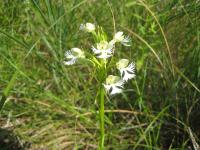
This 4,500 acre site contains the highest quality remaining coastal area in Southeast Wisconsin and in all of Illinois. The Lake Plain is a high priority stopover site for migratory land birds, in particular the migratory shore birds and waterfowl that move up and down the shore of Lake Michigan. The unique geology and hydrology of this ecosystem is driven by historic glaciation, wind and wave action, Lake Michigan water levels, ground water inflows, and in the more recent past, surface water inflows. The area includes six globally rare and representative wetland types, and supports populations of the Eastern prairie fringed orchid and plover, which are federally-listed threatened and endangered species. The Lake Plain is also home to one of the largest and most well-studied populations of the Blanding’s turtle, which is a rare species in Wisconsin and an endangered species in Illinois. Each year, the Lake Plain supports over 2 million visitors.
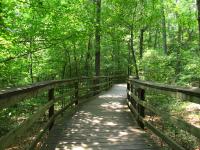
This 41 square mile National Park was named for the Native American tribe that lived there centuries ago. The park is a mosaic of freshwater swamp forests, seasonal sloughs, forested peatlands, permanent and seasonal creeks, permanent freshwater lakes, and shrub-dominated wetlands. It contains the largest remaining example of old-growth bottomland hardwood forest in North America. The park supports a variety of species with different conservation status under the National Endangered Species Act, such as the Rafinesque big-eared bat, bald eagle, wood stork, wallow-tailed kite, red-headed woodpecker, and spotted turtle. The park is a popular destination for viewing fireflies and hosts an annual firefly festival.
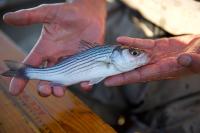
The Connecticut River is the longest and largest river system in New England, and shifting sandbars have preserved the river's extraordinary populations of natural and undisturbed plant and animal communities. The site includes open water; fresh, salt and brackish tidal wetlands; floodplains, river islands, beaches, and dunes. The system serves as essential habitat for numerous regionally, nationally, and globally rare or otherwise significant species and forms a large biological corridor that links marine and estuarine waters of the Atlantic Ocean. Many migratory and Neotropical bird species nest or winter in the marshes, which regularly support over 10,000 individuals, consisting of 18 species of waterfowl.
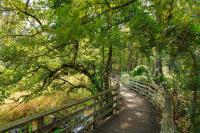
Corkscrew Swamp Sanctuary is over 13,000 acres in size and contains cypress swamps, marshes, wet prairies, and pine flatwoods. The Sanctuary was established in 1954 to protect the last remaining strand of bald cypress in North America, which endured heavy logging activities in the 40s and 50s. The Sanctuary’s majestic, 500-year-old bald cypress trees have a circumference of up to 25 feet. Nearly 200 species of birds, including the wood stork, the endangered Florida panther, and 22 species of orchids live on site, including the ghost orchid, which is one of five threatened or endangered orchid species. The Sanctuary is renowned for its “Super Ghost Orchid,” which is the largest ghost orchid ever to be discovered in Florida.
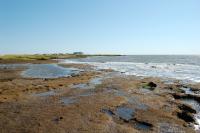
The Delaware Bay is one of the four most important shorebird migration sites in the world, boasting the second-highest concentration of shorebirds in North America. The Bay also provides wintering and migratory habitat to many species of songbirds, waterfowl and raptors. The lower Delaware Bay complex is used as a staging area by more than 90% of the North American populations of five species of migratory shorebirds. More than one million individual shorebirds use the region, making it one of the two most important staging areas on the Atlantic coast of North America. It is also home to the world's largest horseshoe crab population, which are a major source of food for migrating birds. These birds gain up to 50% of their body weight in fat by feasting on horseshoe crab eggs and submerged vegetation. The bay’s 1.1 million acres of wetlands provide critical habitat for 35% of the region's threatened and endangered species, including the endangered roseate tern and the threatened bald eagle and piping plover.
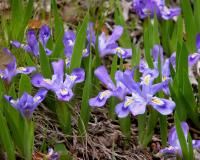
This site occupies a major section of the Eastern Lake Michigan shoreline of northern Door County, and contains diverse examples of regionally and globally significant wetland communities. It supports numerous species of fauna and flora including the rare dwarf lake iris and over 150 species of birds that use the site for nesting or as staging areas during autumn and spring migrations. It also hosts the largest known population of the federally-endangered Hine’s emerald dragonfly. The area is known for the limestone caves which span the coast, as well as shipwrecks which can be seen from the surface of the water. Over 250 shipwrecks have been recorded in the area, resulting in the straight linking Lake Michigan and Green Bay to be called “Porte des Morts”, or “Devils’s Door”.
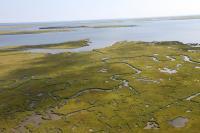
This refuge protects more than 47,000 acres of southern New Jersey coastal habitats and is actively managed for migratory birds. Of those 47,000 acres, 78% is salt marsh. Salt marsh is the most productive land on earth- twice as productive as even the richest farm fields. This makes salt marshes a very important nursery for young fish, and a great buffer to the upland coastline for nor’easters, hurricanes, and strong waves. The refuge’s location in one of the Atlantic Flyway’s most active flight paths makes it an important link in seasonal bird migration where over 200 species of bird nest or stage. The area is particularly important for the northern black duck and Atlantic brant, as well as threatened or endangered species such as the piping plover, bald eagle, least tern, and roseate tern.
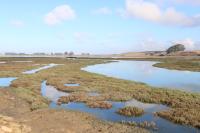
Elkhorn Slough is California’s second largest wetland community which covers more than 1,700 acres and is home to more than 340 species of birds, 500 species of invertebrates, and 100 species of fish. The area is also well known for having a high concentration of southern sea otters, California sea lions, and harbor seals. The Slough harbors eelgrass beds as well as oyster communities, which provide valuable fish nurseries, and the intertidal mudflats nourish migratory shorebirds. These distinctive estuarine communities are among the rarest and most threatened habitat type in California, which has lost approximately 91% of its wetlands in the last 100 years.
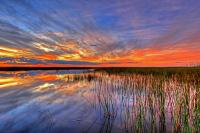
This national park is the largest tropical wilderness in the United States and the largest wilderness of any kind east of the Mississippi River, covering over 1.5 million acres in Florida. An average of 1 million people visit the park each year. The park is the most significant breeding ground for tropical wading birds in North America and contains the largest mangrove ecosystem in the Western Hemisphere. Thirty-six threatened or protected species inhabit the park, including the Florida panther, the American crocodile, and the West Indian manatee, along with 350 species of birds, 300 species of fresh and saltwater fish, 40 species of mammals, and 50 species of reptiles. The Everglades play an extremely important role in domestic, industrial and agricultural water supply, flood protection, and fishery support and is of prime importance in North America for conservation education and outdoor recreation.
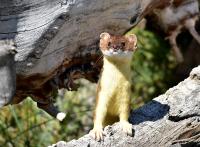
The Francis Beidler Forest is a wildlife sanctuary in Four Holes Swamp, a blackwater creek system in South Carolina. It consists of over 16,000 acres of mainly bald cypress and tupelo gum hardwood forest and swamp with approximately 1,800 acres of old-growth forest. It is the largest virgin stand of these trees in the world, with some trees over 1,000 years old. More than 300 vertebrates and 300 plants depend upon the site for survival, and a number of threatened or vulnerable species are present, such as the flatwoods salamander and several bat and snake species; threatened flora include southern twayblade, green-fly orchid, and shadow-witch orchid. Some 140 species of birds are supported and the site has been designated a BirdLife Important Bird Area (IBA).
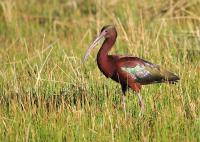
Located in the Central Valley in the San Joaquin River Basin, the site covers 160,000 acres and is the largest remaining contiguous block of freshwater wetlands in California. It consists of semipermanent and permanent marshes, riparian corridors, vernal pool complexes, wet meadows, native uplands and grasslands. Unlike typical national wildlife refuges, the Grasslands are comprised entirely of privately-owned lands on which perpetual conservation easements have been purchased. It is a major stopover site for shorebirds moving through the Central Valley, with an average of 10,000 each fall, winter and spring, and over 200,000 counted during peaks. American white pelicans, greater sandhill cranes, Northern pintails, and green-winged teals can all be found here alongside the half-million individual ducks, geese, and swans each year between November and February.
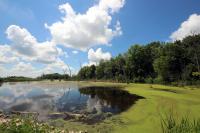
Horicon Marsh is a shallow, peat-filled lake bed scoured out of limestone by the Green Bay lobe of the massive Wisconsin glacier. It is one of the largest intact freshwater wetlands in the USA and also one of the largest cattail marshes in the world. It is an important staging area for numerous species of migratory birds, especially for Canada geese and mallards. Other species, some of them endangered, use the area as a staging, nesting or feeding site. Among these are the bald eagle, the whooping crane, and the yellow-throated warbler. The marsh also provides critical habitat for muskrats, red foxes, turtles, frogs, bats, dragonflies, fish, and more.

Humbug Marsh represents the last mile of natural shoreline on the U.S. side of the Detroit River, and spans 410 acres. A diversity of habitats is present within the area, including old growth oak‐hickory forest, vernal wetlands, freshwater lagoons, second‐growth forests, and coastal marsh. Because the vast majority of shoreline along the Detroit River has been disturbed or destroyed (i.e. 97%), Humbug Marsh is significant as a stopover location for many migratory birds, as well as significant for many local populations of wildlife. Specifically, it has national significance for the bass, walleye, and whitefish populations that thrive here, the diving ducks that live on its shoreline and in its waters and the 17 species of raptors that stop here along their migration route, including the Michigan endangered peregrine falcon and the broad-winged hawk.
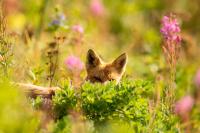
The Izembek National Wildlife Refuge is 310,000 acres and one of the most ecologically unique of Alaska's refuges. This diverse wilderness protects a wide variety of fish and wildlife species and their habitats. These include five species of salmon; furbearers such as wolf, fox and wolverine; large mammals such as caribou, moose and brown bears; shorebirds; seabirds; and a large array of waterfowl. Within the lagoon, shallow, brackish water covers one of the world's largest beds of eelgrass, creating a rich feeding and resting area for hundreds of thousands of waterfowl.
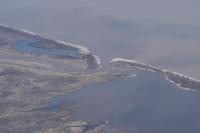
This site is a largely undeveloped wetland complex composed of sloughs, bogs, and coastal lagoons that harbor the largest natural wild rice bed on the Great Lakes. This wild rice bed thrives among a myriad of dynamic and diverse wetland habitats, supporting scores of rare plant and animal species. The area is under tribal management that is protected as a Conservation Area by an Integrated Resource Management Plan under the jurisdiction of the Bad River Band of the Lake Superior Tribe of Chippewa. Tribal members frequent the area primarily for subsistence trapping, hunting, fishing, and to retain historic harvesting techniques; access to the area is strictly limited to Bad River tribal members and Bad River Natural Resources staff. The endangered gray wolf and threatened Canada lynx are two rare and elusive species known to inhabit the site. It provides necessary and rare feeding, resting, and nesting habitat for both migrating and local populations of birds, and one of the two remaining sites for the endangered piping plover.
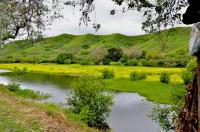
Sacred to Hawaiians, Kawainui Marsh, the largest remaining emergent wetland in Hawaii and Hawaii's largest ancient freshwater fishpond, is located in what was once the center of a large volcanic crater from the Koolau shield volcano. The marsh provides primary habitat for four of Hawaii's endemic and endangered waterbirds, including laysan duck and Hawaiian goose or nene, and contains archaeological and cultural resources, including ancient walled taro water gardens (lo'i) where fish were also cultivated. Kawainui Marsh stores surface water, providing flood protection for adjacent Kailua town, one of the largest towns on the windward side of O'ahu. Hamakua Marsh is a smaller wetland historically connected to and immediately downstream of Kawainui Marsh, which also provides significant habitat for several of Hawaii's endemic and endangered waterbirds.

The Laguna de Santa Rosa Wetland Complex is composed of seasonal and perennial freshwater wetlands such as creeks, ponds, marshes, vernal pools, swales, floodplains, riparian forest and grassland located in the Laguna de Santa Rosa Watershed. The complex includes an array of public and privately owned units. This site is considered a biological hotspot due to the various types of rare and unique wetlands like vernal pools and their associated rare and endemic plants like the Sonoma sunshine and animal species such as the California tiger salamander. In addition to birds, a wide variety of animals call the Laguna home, including grey fox, coyotes, river otters, endangered salmon, and an occasional bobcat or mountain lion. Besides its high biological value, the site provides flood control, scenic beauty, and recreation services to the majority of Sonoma County's human population.
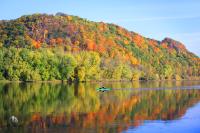
This site covers the longest free-flowing stretch of river in the Midwest. Its importance is magnified through common boundaries with the nationally and internationally significant Mississippi River, the Driftless Area, and the Upper Mississippi migratory bird flyway. Its sloughs and marshes, forested bottomlands, sand terraces and bluff tops harbor a large number of species and diverse and rich communities. This area provides a natural habitat for rare and endangered species. This sites designation was Wisconsin’s sixth and largest with over 49,000 acres, and includes land owned by the Wisconsin Department of Natural Resources, the U.S. Bureau of Land Management, the Ho-Chunk Nation, and private landowners. The area was designated in recognition of its high-quality complex of wetlands, uplands, and waterways and the important fish and wildlife habitat these provide. The areas natural resources attract hundreds of thousands of tourists each year who come to hunt, fish, paddle, and relax, fueling the region’s economy.

The site is the largest wetland complex in the Lake Champlain Basin, which is considered a resource of national significance. It contains the largest contiguous floodplain forest in Vermont and unique habitat types such as the Maquam Bog. It is important for rare and threatened or endangered species such as the eastern spiny softshell turtle, seven species of mussel and lake sturgeon. The site supports over 200 species of birds and is a breeding area for numerous species of waterfowl, raptors and wading birds. It is also the only known breeding site for black terns in Vermont. As the site is located along the Atlantic Flyway, populations of waterfowl often reach 20,000 birds in the autumn.
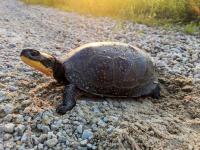
This freshwater, flowing, permanent river, connects two large freshwater lakes and has numerous significant coastal fish and wildlife habitats. Rare and threatened ecological communities are present with at least 21 species such as the Blanding’s turtle and lake sturgeon. Seven species are listed on the IUCN Red List, such as the black-capped petrel, the federally protected piping plover and 45 state protected species.
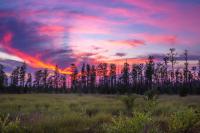
Located on the Atlantic and Gulf Coastal Plains of southeastern United States, Okefenokee is an exceptional example of the southern yellow pine forests that once was the most extensive forest type in the U.S. The refuge is the most complete, large freshwater wetland ecosystem remaining on the North American Coastal Plain (NACP) and the largest blackwater wetland ecosystem in North America. Habitats provide for endangered and threatened species such as red-cockaded woodpeckers, wood storks, indigo snakes and a wide variety of other wildlife species. In addition, the Okefenokee supports over 1,270 flora and fauna species, exclusive of thousands of invertebrate species and is world renowned for its biological diversity of amphibian and reptile species and for its high number of regional endemic species.
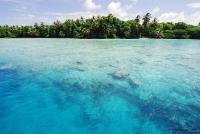
Located halfway between Hawai‘i and American Samoa lies Palmyra Atoll, a string of about 26 islets nestled among several lagoons and encircled by 15,000 acres of shallow turquoise reefs and deep blue submerged reefs. Palmyra's lush vegetation on land and surrounding lagoons provide a robust environment for many species. It's intertidal sand and mudflats provide attractive resting and feeding grounds for migratory seabirds and shorebirds. A National Wildlife Refuge (NWR) since 2001, the site supports a variety of species, such as the Hawaiian monk seal, hawksbill, and green sea turtle, over 400 species of fish and the second largest red-footed booby colony in the world.
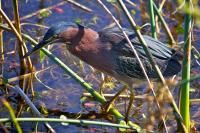
Pelican Island holds the distinction of being our nation’s first national wildlife Refuge. It lies in the Indian River Lagoon, an estuarine system that extends for over 200 km along the east coast of central Florida. Its unique conditions are suitable for a large number of species, including 140 bird species that use the refuge as a nesting, roosting, and feeding, as well as 18 species of mammals, 27 of reptiles and amphibians, over 300 of plants. It also serves as a nursery for species of threatened and endangered sea turtles such as the Kemp´s ridley hawksbill green and loggerhead turtles.
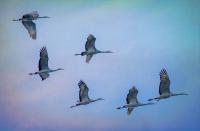
Quivira NWR features a unique combination of rare inland salt marsh and sand prairie in south central Kansas. These wetlands are unique due to the high concentration of salt in many areas. Subterranean salt deposits are near enough to the surface to affect the groundwater that percolates to the surface. Many areas have a high enough salinity to support salt-tolerant plant species such as inland salt grass. The salt marshes, interspersed with mixed grass prairie and agricultural fields, provide critical nesting, migration, and wintering habitat for more than 311 bird species and literally millions of individuals. A number of nationally endangered and threatened species are present, including the peregrine falcon, whooping crane, interior least tern and piping plover.

The Roswell Artesian Wetlands are of a series of springs, seeps and sinkhole lakes located along the Pecos River but largely fed by natural groundwater discharged from the Roswell Basin. These wetlands contain two distinct areas: Bitter Lake National Wildlife Refuge and Bottomless Lakes State Park. This site supports a diverse collection of plants and animals including several endemic species such as the Roswell springsnail and Noel's amphipod as well as many migratory songbirds, waterfowl, and wading birds such as the sandhill crane and more than 100 species of dragonflies and damselflies.
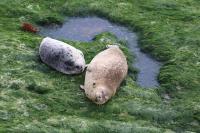
San Francisco Bay Estuary (SFBE) is the largest estuary on the Pacific Coast of the U.S., encompassing approximately 160,000 hectares. Widely recognized as one of North America's most ecologically important estuaries, SFBE accounts for 77% of California's remaining perennial estuarine wetlands. They provide key habitat for a broad suite of wildlife and ecological services such as flood protection, water quality maintenance, nutrient filtration and cycling, and carbon sequestration. The site is home to many plant species and over 1,000 species of animals, including endemic and conservation status species.

Sand Lake NWR was created in 1935 in an effort to rebuild waterfowl populations. Through these efforts, the Sand Lake area was transformed into a refuge that became nationally famous for its abundant wildlife. Today, this large freshwater cattail marsh provides critical nesting and staging habitat for many different bird species. The number of migrating waterfowl using the large wetland complex often exceeds 20,000. Sand Lake is also important habitat for reptiles, amphibians, fish, and mammals. Thousands of people from birdwatchers to anglers and hunters to hikers to school groups visit Sand Lake Refuge each year.
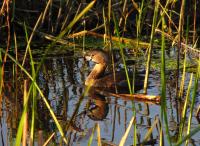
This complex system of backwater lakes, marshes, wet prairie, savannah, and forest has been restored to a landscape that closely resembles the presettlement conditions, before the human impacts of the 20th century. The mix of rare wetland habitats integrated within the extensive natural landscape is unique in this region, where most remaining wetlands have been isolated and/or fragmented. The refuge hosts 22 federally or state endangered and threatened birds, including the peregrine falcon, common moorhen, american bittern, and pied-billed grebe.
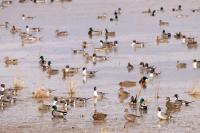
Lying within the former natural floodplain of the Illinois River, this large-floodplain river system creates a diversity of habitats including bottomland lakes, sloughs, marsh, bottomland hardwood forests, and prairies. These support abundant and diverse animal populations. Twenty-eight species of waterfowl are known to use the refuge and it is also a significant area for wood duck production. Due to Emiquon Refuge’s diversity of habitats, it can host over 100 species of “songbirds” at various times of the year. Significant tracts of bottomland forest support specialist species during periods of both nesting and migration. Notable species include: prothonotary warblers, red-headed woodpeckers, pileated woodpeckers and rusty blackbirds.
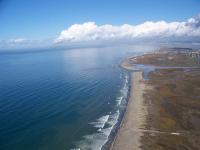
One of the few unfragmented estuaries and coastal lagoons in Southern California, the Tijuana Reserve is a seasonally marine-dominated estuary experiencing freshwater input only during the wet winter period, though its mouth remains open throughout the year. It has several sensitive habitats such as sand dunes and beaches, vernal pools, tidal channels, mudflats and coastal sage scrub. The site is critical habitat for nationally endangered species and subspecies such as the San Diego Fairy Shrimp, the Light-footed Clapper Rail and the Salt Marsh Bird's Beak. This unique area is one of the most biologically productive systems on Earth and has been recognized by several national environmental organizations for its ecological significance.
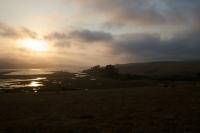
Tomales Bay is a narrow, 15-mile-long tidal estuary along the San Andreas Fault containing eelgrass beds, sand dune systems, and restored emergent tidal marshes. It supports more than 50 species of waterbirds and 13 threatened and endangered species. It is also important to many fish species; including salmon, eel, sturgeon, halibut, endangered coho salmon, and the commercially important Pacific herring that rely on its creeks and extensive eelgrass beds to spawn. The bay also supports a resident harbor seal breeding population.
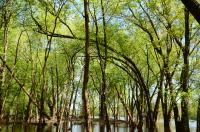
This site includes more than 300,000 acres of federal and state lands and waters of the Upper Mississippi River floodplain. It is perhaps the most important corridor of fish and wildlife habitat remaining in the central U.S., supporting significant populations of over 100 native fish species and is at the core of the Mississippi Flyway, through which 40% of North America's waterfowl migrate. The refuge and surrounding public lands support more than 200 nesting pairs of bald eagles, 120 species of fish, 42 species of mussels and provide migration habitat for up to 50 percent of the world’s population of canvasback ducks. The site also serves as a major navigation highway for commerce and provides millions of citizen’s abundant hunting, fishing and other recreational opportunities.

This 52-acre urban research site is located on the campus of The Ohio State University in Columbus, Ohio. It is adjacent to the Olentangy River and consists of experimental wetland basins, an oxbow wetland and bottomland hardwood forest. This is one of the first created wetland sites designated in the world due to the diverse flora and fauna at the site and the extensive wetland research that takes place here. The site is committed to ecotourism, with tours given to thousands of visitors each year. These tours educate the public on the functions and values of wetlands.